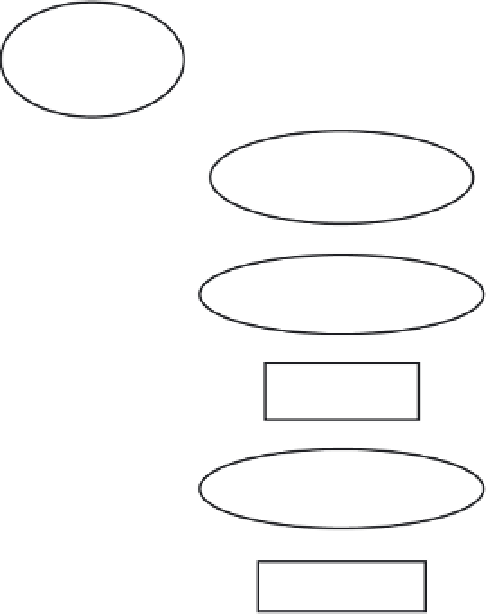Environmental Engineering Reference
In-Depth Information
the calibration process, multiple model runs are
made; values for one or more parameters are
adjusted between model runs, and simulated
results are compared with measured data to
see whether the parameter adjustment resulted
in an improved model fit. Calibration can be
done in a manual trial-and-error manner or in
a formal manner by using statistical techniques
such as nonlinear regression (Cooley and Naff,
1990
; Hill,
1998
; Hill and Tiedeman,
2007
). The
latter approach is referred to as
inverse modeling
or
parameter estimation
and is gradually becom-
ing a standard practice in hydrologic model-
ing (Poeter and Hill,
1997
; Carrera
et al
.,
2005
;
Doherty,
2005
; Poeter
et al
.,
2005
).
Inverse modeling techniques seek to deter-
mine the model parameters that produce the
best agreement between measured and simu-
lated data. An objective function is a measure
of this agreement or model fit. Typically, the
objective function,
S
(
b
), is defined as the sum of
squared weighted differences between observed
and simulated heads and fluxes:
3.2 Model calibration and inverse
modeling
Hydrologic models form the basis of this chap-
ter. Although there are a variety of modeling
approaches, common model-calibration prac-
tices can be applied to most models. Model cali-
bration is the process of adjusting model input
data (parameters) so that model output matches
independent observations or measurements
(
Figure 3.1
). For illustrative purposes, consider
groundwater-flow models. Groundwater-flow
models generate estimates of hydraulic head
and possibly base flow or spring discharge. Field
measurements of any of these phenomena con-
stitute the observations to which model results
a r e compa r ed . Model pa ra meter s con si st of pr op -
er t ies of aqu i fer m ater ia l s (s uc h a s hyd rau l ic con -
ductivity and storage coefficient), initial water
levels, boundary conditions, and sources or
sinks. Recharge can be represented as a bound-
ar y condition or an areal or point source. During
Figure 3.1
Flow chart showing
the major steps of calibrating
a model and using it to make
predictions. Bold italicized terms
indicate steps that are affected by
inverse modeling (after Hill and
Tiedeman,
2007
).
System information related to
model inputs, use in model development
Observations
Related to model output,
use to calibrate model
Adjust parameter
values
and model
construction
Model(s)
Parameters
Compare simulated and
observed values using
objective function
Parameter
estimation
Alternative
models
Evaluate model fit and
estimated parameter values
Predictions
Consider
predictions
Evaluate predictions and
prediction uncertainty
Societal decisions


























